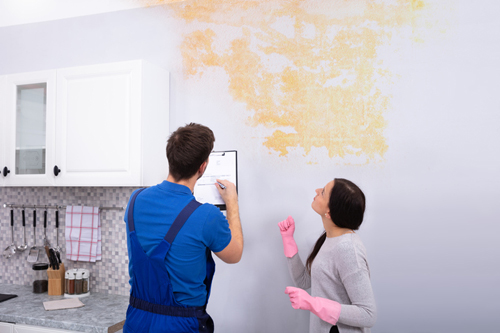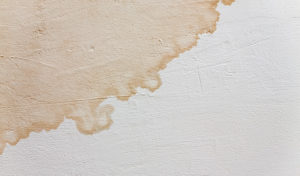Stains from Water on Wall Surfaces: Checking and Fixing Procedures
Stains from Water on Wall Surfaces: Checking and Fixing Procedures
Blog Article
Were you trying to locate advice concerning How to Find and Repair Water Leaking in the Wall?

Water spots on wall surfaces are not positive to the eyes. Your home ought to lack stains on the walls, roofing system, or floorings. That is the excellent state of a home as well as its structures. Yet, occasionally it seems practically inescapable to experience water discolorations on walls in homes.
Homeowners living in humid regions regularly take care of the anxiety of water discolorations on wall surfaces. That doesn't have to be the situation for you. With all-around as well as precise details on the root causes of water discolorations and also timely fixing procedures, you will always be a step ahead of such incidents. So, this article promises to be an useful overview for you.
3 Typical Reasons For Water Spots on Wall Surfaces
Contrary to popular belief, water stains on walls do not always originate from poor structure materials. There are a number of sources of water spots on wall surfaces. These include:
Wet
When warm damp air consults with completely dry cold air, it triggers water beads to base on the wall surfaces of buildings. When there is vapor from food preparation or showers, this happens in kitchen areas as well as shower rooms. The water droplets can discolor the bordering walls in these parts of your house and also infect various other areas.
Wet or condensation impacts the roofing as well as walls of structures. This causes them to show up darker than various other areas of the house. When the wall surface is wet, it creates an ideal atmosphere for the growth of fungi and microorganisms. These may have damaging effects on health, such as allergies and respiratory disorders.
Poor Drain
This will avoid water from leaking right into the walls. This links to excessive dampness that you see on the wall surfaces of your building.
The leading reason of wet walls, in this situation, can be a poor drainage system. It can also be due to poor management of sewage pipes that go through the structure.
Pipeline Leaks
Many homes have a network of water pipelines within the wall surfaces. It always increases the viability of such pipes, as there is little oxygen within the wall surfaces.
Yet, a drawback to this is that water leak influences the wall surfaces of the building and creates extensive damage. A telltale sign of malfunctioning pipes is the appearance of a water stain on the wall.
Pro Tip
A houseplant in your home additionally increases its moisture. If the house is currently humid, you might want to present houseplants with very little transpiration. An instance of suitable houseplants is succulents.
Water Discolorations on Wall: Repair Service Tips
Property owners would generally desire a quick fix when handling water discolorations. They would quickly realize this is disadvantageous as the water stains persist. Here are a few practical tips that will lead you in the repair work of water spots on wall surfaces:
Conclusion
Although nobody wants to have water discolorations on walls in their home, it can happen to the very best people. This post offers you leverage, as you now understand just how to manage this mishap if it does happen.
It is constantly best to hire specialist services to help repair the problems in your house.
Occasionally it seems practically inescapable to experience water discolorations on wall surfaces in residences.
In contrast to popular belief, water stains on walls do not always stem from bad structure products. There are numerous causes of water spots on wall surfaces. The water beads can tarnish the bordering walls in these parts of your house and also spread to various other locations.
Below are a couple of helpful tips that will guide you in the repair of water stains on walls:
CHECKING FOR WATER DAMAGE
Water damage can be costly, and it may begin before you even notice the first signs of trouble. Water damage can cause mold and mildew in your walls and floors, which can create an abundance of health concerns for your family. It can also lead to costly repairs of various appliances and general home fixtures. To avoid the pricey consequences of water damage, here are Warner Service’s top 5 places you should check:
The walls – The easiest place to spot the beginnings of water damage is on the walls and ceilings of your home. If water damage is present, there will most likely be water stains, especially around the windows and doorframes, and/or cracks in the drywall. If a stain looks unusual (discolored to brown, black or gray, raised texture), has a swollen appearance or is soft to the touch, contact a professional immediately. The pipes – To avoid water damage, consistently check the pipes in your kitchen (especially the dishwasher and ice maker), bathrooms, laundry room (specifically washing machines) and basement for corrosion, leaks and water stains. Pay special attention to where the pipes connect in your home and the location of caulking around the bathroom fixtures, including toilets, sinks, showers and tubs. Missing or loose caulking and grout could be signs of leaking water. This seepage can also quickly cause mold and rust, so double check your water heater and tank for wet spots on the floor. The floor – Water damage is very easy to spot on the floor. Look for any warping or buckling of the material, especially in the basement. If your home has wood flooring, look for bright white or dark stains. If your home has carpeting, keep it dry and clean. A damp carpet that smells of mold could cause water damage and health problems. To avoid this, consider installing floor pans under your appliances to help prevent damages from small, slow and undetected leaks. The basement and attic – If your basement or attic smells odd check for mold and mildew around the area, especially the valley where the roof meets. While you are inspecting those areas, check for wall cracks, floor stains, rust and dampness in the insulation. If you live in a colder and/or rainier climate, perform routine checks for water damage from melting snow or ice and rain. The exterior – Check the roof for damaged flashing and missing, cracked or curled shingles. There should also be no standing water anywhere outside your home. This could be caused by puddles, leaky rain gutters or hoses, poor drainage, or short gutter spouts. Invest in a sump pump system or water flow monitoring system, and perform routine maintenance on these outdoor appliances to avoid indoor water damage.

As an avid reader on , I think sharing that blog post was beneficial. Appreciated our content? Please share it. Let somebody else find it. Thank you for your time spent reading it.
Book Your Installation Report this page